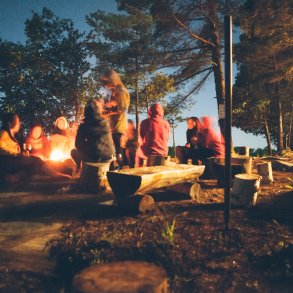By Marilyn Hamilton for Enlivening Edge Magazine
What happens when we turn up in our organizations and discover the presence of a “pebble”?
Our human systems are living through a time when a small act can cause an enormous result—like the power of a pebble to precipitate a land slide or an avalanche.
When I look at a city and see all the human systems embedded within its boundaries—individuals, families, work places, sectors, and communities—the power of the pebble becomes a metaphor for transformational change on a multi-scalar level that is truly daunting.
The pebble is a metaphor with particular sensitivity because it reminds us all too easily of the irritation of a small rock caught in our shoe—or grit between our teeth—or even the biblical “mote in the eye”. We can even think of other ways to notice the impact of a pebble not only in body, but also in mind, heart, culture, and system.
It might be impossible to interact with the organizations in our lives without encountering the presence of a “pebble”. Whether the organizations are private, public, or non-profit, some of the pebbles that might impact us could include:
- the annoying person talking too loud on a personal mobile call at the next desk
- the meeting we are called to attend at a time inconvenient to our plans
- the project to which we have been assigned without consultation
- the unethical environmental practices of the not-for-profit organization’s waste disposal methods
- the organization’s competition gaining recognition for an initiative not their own
- the city changing the zoning bylaws where our organization is located
- an international monetary play that reduces the profits on our organization’s exports
- …The weather. Climate Change. Disaster. Migration …
The power of the pebble seems to attract shadows, negative reactions, conflict. It potentially represents aggravation within a system that then becomes stymied and/or blocked from predictable and fruitful existence.
But the pebble contains a power that can elicit the exact opposite result if we remain open to its “secrets”. Clare Graves (researcher behind Spiral Dynamics) proposed that humans do not change unless they encounter dissonance—that in fact, dissonance is a necessary condition for humans and their systems to develop and evolve.
Without dissonance in our life conditions, humans, at all scales, will likely remain caught in the life conditions that are predictable, certain, simple, and clear. This is the exact opposite of the VUCA (volatile, uncertain, complex, ambiguous) life conditions that challenge us today.
So, what is called for when we find a pebble in our organizations?
Learning from Clare Graves, we can stand back from the irritation. We can choose to be witnesses to an unexpected opportunity. We can reframe the pebble as a possibility for creative change. We can design new approaches. We can move from our individual irritations to a collective inquiry that brings together a larger “we-field” to find a way around the irritation together.
If we opened ourselves to such an approach, we might find instead of pebbles we could:
- Reorganize the office and create a mobile-friendly zone for everyone away from the desk.
- Implement a technology to invite people to find a time convenient for all.
- Gain courage to talk to the project manager about the project assignments.
- Find the moral strength to point out the contradiction of the unethical environmental practices with the not-for-profit organization’s values.
- Promote a decision to connect with the organization’s market and invite them to share the benefits they enjoy because of our innovations.
- Join with other organizations in the area to speak to the impact of the Civic Management decisions on the bottom lines and tax collection.
- Decide to redefine organizational purpose and shift from global markets to local service that reduces carbon footprints and improves customer service.
Finding a creative strategy to reframe the pebble as a force for creative change in circumstances such as these gives us situations where we can rehearse our capabilities and develop the resources for much bigger challenges, including: Climate Change. Disaster. Migration …
Not only that, but making the pebble the source of creative transformation can open the door to a movement of multiple organizational alignments that change not only how we organize internally but also impact our whole external supply chain of resources and services.
It turns out that the power of the pebble is fractal—by moving one stone at a time we can literally move the whole mountain.
Note: Thanks for topic and metaphor inspired by the September 2019 monthly dialogue with Centre for Human Emergence Canada. (See here.)
 Marilyn Hamilton, PhD, is a city (or Human Hive) evolutionist, futurist, PRAQtivist, author, and researcher. She reframes complex challenges designing inquiry, action and impact as integral, evolutionary and living systems. Through care for self, others, place and planet she believes cities can become “Gaia’s Reflective Organs”. [email protected].
Marilyn Hamilton, PhD, is a city (or Human Hive) evolutionist, futurist, PRAQtivist, author, and researcher. She reframes complex challenges designing inquiry, action and impact as integral, evolutionary and living systems. Through care for self, others, place and planet she believes cities can become “Gaia’s Reflective Organs”. [email protected].




